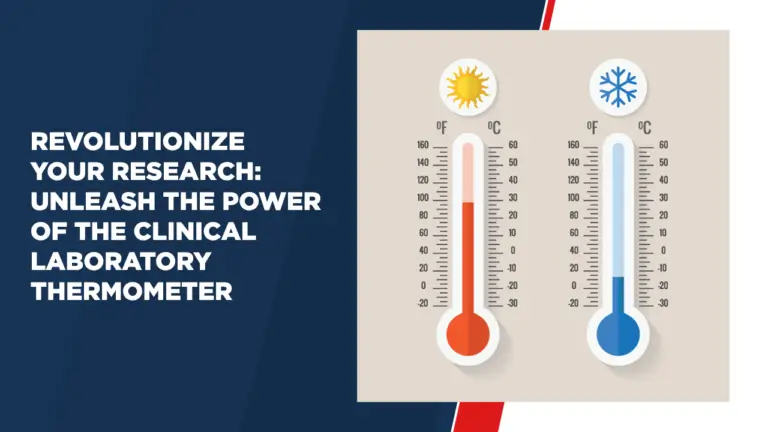Revolutionize Your Research: Unleash the Power of the Clinical Laboratory Thermometer
Introduction
Thermometers have been an important tool in various fields including medical laboratories. In this article, we’ll explore the world of clinical laboratory thermometers, focusing on their types, parts, and the evolution of this essential tool.
The Genesis: Who Invented the Thermometer?
The history of the thermometer dates back to the early 17th century. The invention of the first thermometer is often credited to Galileo Galilei, who used a simple water-based device to measure temperature changes. However, it was Daniel Gabriel Fahrenheit who introduced the mercury-in-glass thermometer in the early 18th century, setting the stage for modern temperature measurement.
Types of Thermometers
- Clinical Thermometer
Clinical thermometers are specifically designed to measure human body temperature. They come in different forms, including oral, ear, and forehead thermometers. Clinical thermometers have evolved significantly, with digital variants becoming the norm due to their accuracy and ease of use.
- Digital Thermometer
Digital thermometers have revolutionized temperature measurement. They use a sensor that converts temperature into an electrical signal, which is then displayed digitally. These thermometers are known for their speed and accuracy, making them indispensable in clinical laboratories.
Parts of a Clinical Laboratory Thermometer
Understanding the components of a clinical laboratory thermometer is essential to its proper use:
- Temperature sensor
The sensor is the heart of the thermometer, responsible for detecting temperature changes. In digital thermometers, this is often a thermistor or infrared sensor.
- Display
The display unit provides a readout of the measured temperature. In digital thermometers, this usually has an LCD or LED screen, making it easy to read the results.
- Battery Compartment
Digital thermometers are powered by batteries, which are usually located in a compartment near the bottom. Ensuring a well-functioning battery is important for accurate measurements.
- Inquiry or Tip
The probe or tip of a clinical thermometer is the part that comes into contact with the object or body being measured. It needs to be clean and in good condition for an accurate reading.
Evolution of Clinical Laboratory Thermometers
Over the years, clinical laboratory thermometers have evolved from simple mercury-in-glass instruments to sophisticated digital instruments. This development has increased accuracy, reduced measurement times and improved safety, making them indispensable tools in healthcare and research.
Conclusion
Clinical laboratory thermometers have come a long way since their inception. From the pioneering work of Galileo to the digital precision of today’s thermometers, these instruments continue to play an important role in health care and scientific research. Understanding the types, parts, and development of thermometers is essential to using them effectively in clinical laboratories, ensuring accurate temperature measurements that are vital to patient care and scientific endeavors.




